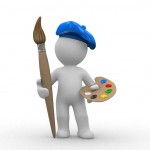7 Elements of an Aesthetically Pleasing Website
 What makes a website pleasing to the eye? What usability factors improve visitor engagement and stickiness? Here are ten of the most critical elements to consider when you are designing a site, or assessing a current site for maximum impact.
What makes a website pleasing to the eye? What usability factors improve visitor engagement and stickiness? Here are ten of the most critical elements to consider when you are designing a site, or assessing a current site for maximum impact.
- Color
One of the most powerful subliminal visual tools is the deliberate use of color to influence the user experience on a website. Reds are “hot” colors and command attention. Blues and greens are “cool” colors and have a calming effect. Think carefully about the colors you choose for your background, headers, navigation and links. Test different colors methodically to determine the most effective palette for your audience and message. - Images
A picture tells a thousand words. But the wrong picture is a waste of precious real estate. Whether you use photography, diagrams or illustrations, be sure to select imagery that will be appealing to your audience and is also relevant and truly adds value to your message. - Textual Content
Unlike a slick magazine print campaign, a website needs to be populated with relevant, keyword-rich content. Use headings and subheadings (H1s, H2s, H3s, etc.) to organize the text and allow easy visual scanning. Use bold face and anchor text (intrasite links) to communicate important concepts. If your subject matter is complex, provide a glossary and link key terms to it frequently, so you don’t have to define concepts repeatedly on a page. - Navigation
Make it easy for visitors to find what they are looking for. Give them multiple vehicles for accessing information. Provide a Search function, side navigation categories, footer navigation text links, top navigation buttons or tabs, whatever will make it utterly seamless for a user to move around your site, no matter where they start. Remember a website is not a linear thing. A new site visitor may land first on your home page, or on a product page buried deep within your site. - Alignment
Elements of your site should be visually connected and balanced. Stick to a limited number of page treatments; fewer if your site is small, more for larger sites comprised of multiple content types. A page that is frenetic and chaotic will have a much higher bounce rate. A page with a clarity of message, cleanly aligned visual elements and a clear call to action will have a higher conversion rate. - Consistency & Continuity
Be consistent throughout your site so that a visitor navigating from page to page will always know where they are and how to get to the next item of interest. Continuity is one of the single most important elements in conversion. When a user clicks to navigate to a new page, that page must match their expectations and deliver a consistent, continuous message. - White Space
White space is an often undervalued commodity. But it’s a concept used throughout design and aesthetics. Think of it as breathing room. It’s like listening instead of always talking. It’s a welcome break in a busy day. It will allow your visitors to focus on what’s important. If every pixel is vying for your visitors’ attention, you will never get your key message across.
Take an objective look at your website. Evaluate it using these 7 points of aesthetics. Is there room for improvement? Maybe it’s time for a mini makeover!
